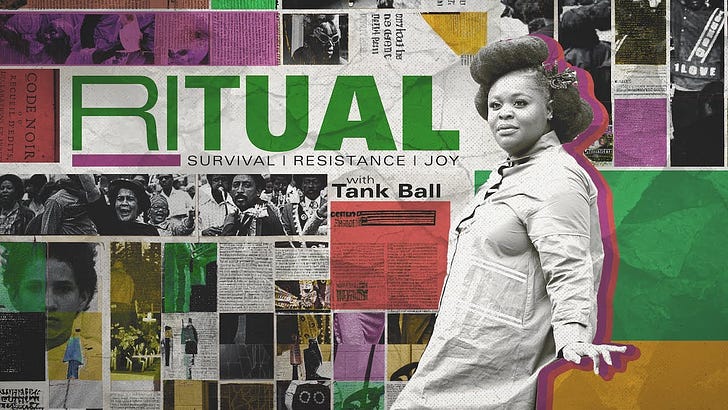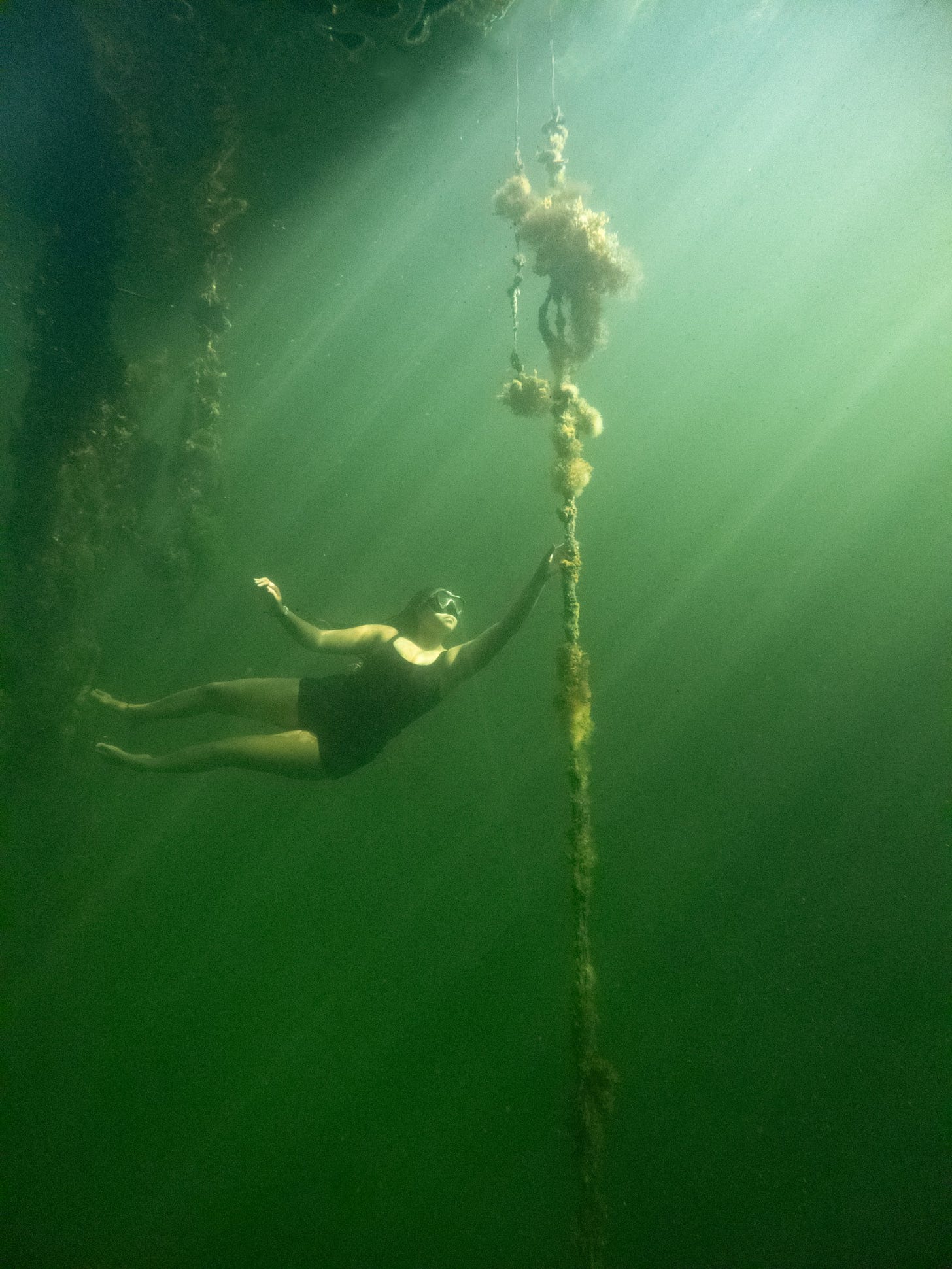Fly in the Buttermilk Syllabus
List of ten resources about myth in the Black Diaspora in the Americas
Consider this the fourth publication in a series about settling into a niche within my research practice. The first part was called “Fly in the Buttermilk” where I recounted my realization that I won’t fill the hole in my heart1 through coursework. Part two was the audio recitation of the essay from part one, which was a continuation of the practice of speaking my work aloud to build confidence and deepen my engagement with it. Part three was “Writing with Ghosts,” which epitomizes the cross-sector dialogue I want to foster between myth and social justice. This is the fourth part: the eponymous Fly in the Buttermilk (FITB) syllabus.
I love a syllabus. I remember when Lemonade came out and people started compiling resources to help others understand the symbols in the visual album. Like, yes, girl! Help me learn! Point me in the right direction! Cite your sources! I’ve been obsessed with them as learning tools ever since, and have collected syllabi on womanism, film studies, systemic racism, and more.
Reading is hard. Learning is hard. So I’ve come to think of a syllabus as an invitation into a conversation that I really want to have. How do I help sequence a learning plan so all the conversation’s participants show up as informed as possible? Which thereby necessitates that the syllabus contain an array of “texts” like films, videos, music, and podcasts — not just books. Ideally the syllabus initiates a conversation that combines shared, grounded knowledge with our own lived experiences, and thus expands our capacity to generate new relationships, new visions, and new worlds.
The FITB syllabus is retrospective. It contains some of the research that informed my three previous dispatches, and consequently some of what I’m considering exploring in my dissertation. I recommend following them in the order listed, but you do you.
Learning is best in dialogue with others. If you engage with any of the texts, I’d love to know what you think in the comments.
1. Fly in the Buttermilk (Shuck to my lou)
What even is a “fly in the buttermilk?” It’s a country-ass saying about being the only Black person, often unwelcome, in a sea of whiteness. It’s also a line in a well-known Southern folk song: “Fly in the buttermilk. Shoo, fly, shoo.”
2. Know your whites
This is a quote from Tressie McMillan Cottom in Thick from an essay about Obama-era politics and her distrust of white people as a voting bloc. I was stumbling through a conversation with a friend about why it was important to stay vigilant about the political inclinations of my peers in central Oklahoma, regardless of whether I could influence their decisions. This is what I wish I’d told him:
[to know your whites] ... is to be intimate with some white persons but to critically withhold faith in white people categorically” (source).
3. Octavia Butler on Charlie Rose
My fav, again offering me encouragement and inspiration when I need it. Butler’s interview on Charlie Rose challenges me to see my educational grievances as an opportunity to “write myself in.”
4. “For Black Archaeologists, the Atlantic Ocean is an Ancestral Graveyard” by Omnia Saed
This article for Atmos opens by naming the ocean as a confluence of terror and healing for Black folks. I feel that every time I go to the beach, and I’ve tried to write about the ways water is continually working in my psyche.
5. Zora Neale Hurston: Claiming a Space
PBS is a godsend. I have referred to their YouTube channels frequently when I need a visual medium to enliven my coursework. Earlier this year they produced a full documentary about the life and work of the charming and intrepid American anthropologist and folklorist Zora Neale Hurston.
6. The Sanctified Church by Zora Neale Hurston
I’m ashamed to admit it but this is my first time reading Hurston, at least that I can remember. Sanctified Church is my current read when I can steal moments of consciousness right before bed. I’m hoping it’ll do cool stuff to my dreams.
7. Daughters of the Dust by Julie Dash
This film is a rich source of information about how West African religious practices melded with European Christianity and evolved into the magico-religious conjure practices of the American South. It’s had a cultural resurgence since Beyonce used it as source material for Lemonade but it was critically acclaimed well before that, launching the careers of Dash and Arthur Jafa. Every time I watch it, it stuns me.
8. Ritual - PBS Voices
PBS for the win again! They published a docuseries on ritual last year with Tarriona Ball, the lead singer of Tank and the Bangas, as the host. It was nourishing and educational.
9. Santeria: African Spirits in America by Joseph Murphy
I’m “culturally Christian” meaning I was raised to be suspicious and judgmental of all other religious traditions. The colonized mind sees everything as “demonic,” which is hilarious in retrospect because I’m pursuing a Ph.D. in what is essentially world religion… Anyway, Murphy offered a really thorough explanation of how the indigenous west African religions survived the slave trade by blending with Catholicism in the Caribbean that balances history, ethnography, and autobiography.
10. “River” by Ibeyi
My friend Taylor is the most cosmopolitan person I know, and she introduced me to Ibeyi right before Beyoncé dropped Lemonade; the French Afro-Cuban twins are featured in the visual album's problematic porch scene. “River” is a song from their self-titled debut album that has been in my rotation when I need comfort since Taylor put me on. Now with age and education I know that the song is a tribute to Oşun, goddess of the sweet waters, establishing another connection in my slow trek to the water.
Note: This post contains affiliate links. If you choose to purchase the books using the Bookshop affiliate link, I will receive a small commission on your purchase.
This refers to a quote from Eleanor Fishburn, Chair of the Barbareño Band of Chumash Indians. When she visited my Native Mythologies of the Americas class in the spring to discuss the archaeological and oral history research she’d been doing, she mentioned that sometimes the best remedy for pain is filling a hole in one’s heart with culture.






This is amazing. I love the idea of a syllabus also being a resource list. Also how it’s not to directional. There’s space to be curious 🥰 sharing right meow 🐱😹